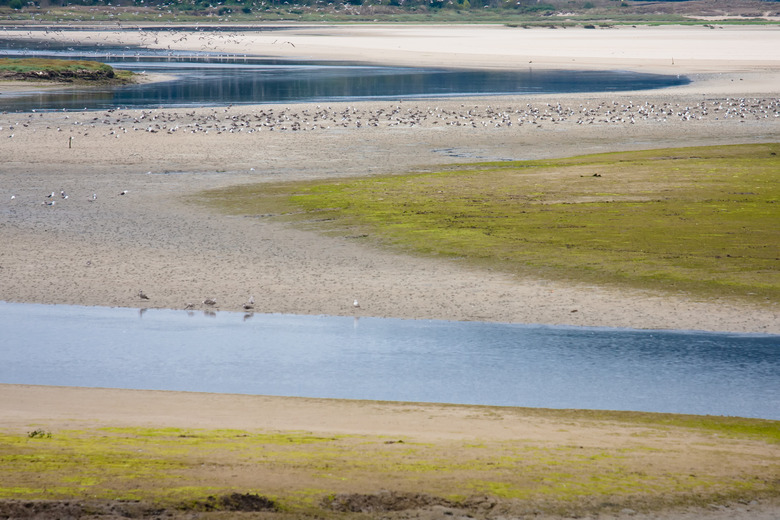How Is A Delta Formed?
A delta is a land form comprised of sediments found at the mouth of the river. A delta can only form when river channels carry sediments into another body of water. Herodotus, a Greek historian, first used the term "delta" for the Nile River in Egypt. This is because the sediment land mass developed at mouth of this river formed a triangular shape that looks like the upper case Greek letter delta.
Formation
Formation
Unlike other landforms affected by water current, a delta is not mainly created because of erosion of land surface caused by the force of wind and water. As the river channel flows over the ground and makes contact with soil, it carries with it sediments like gravel, sand, silt and clay. When a river channel encounters another body of water, it loses it speed and deposits such sediments onto a flat area. The sediment deposited by this running water is called Alluvium. These sediments pile up into several layers called beds. The delta becomes a main channel that divides substantial land masses into various streams called distributaries. These distributaries appear like a maze of water channels.
Factors
Factors
The river's depth, width and velocity determine how much and how big the sediments it can carry. A fast and turbulent river transports larger sediments in size and amount. When the river's flow slows down, the size of the particles decreases because larger particles are deposited first. This cycle continues producing beds with alternating layers of fine and course sediments. The battle between the river's flow and the amount of sediments it carries, and the strength of the tidal waves of the body of water, determines the delta's shape.
Misconceptions
Misconceptions
Deltas are mistaken for another classification of land form called alluvial fans. Alluvial fans are also composed of fan –shaped layers of sediments. The terms however are not interchangeable as delta is mainly formed beside a river or a body of water while alluvial fan formation happens on dry land. In most cases, alluvial fans occur at the canyon's base and onto a flat area at the foot of mountain.
Types
Types
The three main types of deltas are the arcuate, the bird's foot and the cuspate. The arcuate are the fan-shaped deltas. The wider portion of the fan is facing the water. Relatively coarse sediments are formed in this type of delta. The river activity is balanced with the wind. The bird's foot delta got its name because it forms like a bird foot's claw. This shape is created when the waves are weak and the river flow is stronger. Thus, this delta rarely occurs along ocean coasts because the waves are often stronger than the river current. The cuspate deltas are formed where sediments are deposited onto a straight shoreline with strong waves. The waves push the sediments to spread outwardly creating the tooth-like shape.
Examples
Examples
The Nile Delta is an example of an arcuate delta while the Mississippi Delta is classified as a bird's foot delta. The Tiber Delta found in Italy is an example of a cuspate delta. Other large rivers around the world such as Rhine, Danube, Tigris, Euphrates and Mekong have formed their own deltas that are fertile enough to grow agricultural vegetation. The Huang He, or Yellow River, in China deposits the greatest load of sediment annually into its delta. The load weighs around 1.6 billion tons.
Cite This Article
MLA
Writer, Contributing. "How Is A Delta Formed?" sciencing.com, https://www.sciencing.com/delta-formed-6643968/. 13 March 2018.
APA
Writer, Contributing. (2018, March 13). How Is A Delta Formed?. sciencing.com. Retrieved from https://www.sciencing.com/delta-formed-6643968/
Chicago
Writer, Contributing. How Is A Delta Formed? last modified March 24, 2022. https://www.sciencing.com/delta-formed-6643968/
